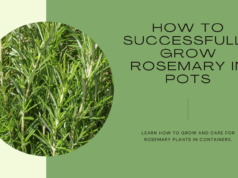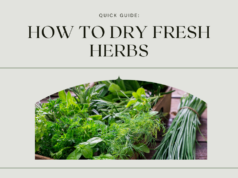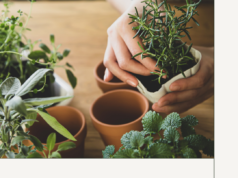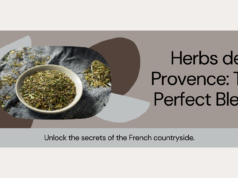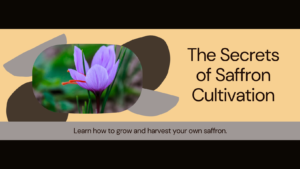
Welcome to our in-depth guide on saffron cultivation! Whether you’re a passionate gardener or aspiring entrepreneur, learning about the cultivation of saffron can open up a world of possibilities. Saffron is a prized spice known for its vibrant color, distinct flavor, and numerous health benefits. In this article, we’ll delve into the fascinating process of growing and harvesting saffron, as well as explore its culinary and medicinal significance. So, let’s embark on a journey to unlock the secrets of saffron cultivation!
Key Takeaways:
- Saffron cultivation involves specific climate and soil requirements for optimal growth.
- Planting and harvesting saffron bulbs require careful attention to depth and spacing.
- Saffron offers various health benefits, including its antioxidant properties and potential mood-enhancing effects.
- This prized spice has long been used in culinary and traditional remedies across different cultures.
- There are both traditional and modern methods of saffron cultivation, each with its advantages and disadvantages.
The Significance of Saffron in Culinary and Medicinal Fields
When it comes to saffron, its significance extends far beyond its vibrant crimson hue and delicate floral aroma. This precious spice is highly valued not only for its culinary uses but also for its remarkable medicinal benefits. Let’s delve deeper into the world of saffron and uncover its unique contributions to the culinary and medicinal fields.
The Culinary Uses of Saffron
Saffron has been treasured for centuries in gastronomy, adding a touch of elegance and flavor to various dishes. Its distinct taste is described as subtly sweet and earthy with hints of honey and hay. Due to its potency, a little goes a long way, making it a prized ingredient in both savory and sweet recipes.
- Paella: The traditional Spanish dish comes to life with the vibrant golden threads of saffron, infusing the rice with a rich and aromatic flavor.
- Biryani: This fragrant Indian rice dish takes on a captivating hue with saffron, elevating the flavors and enticing the senses.
- Risotto alla Milanese: Originating from Italy, this creamy saffron-infused rice dish showcases saffron’s ability to impart a velvety texture and a luxurious taste.
Moreover, saffron is a versatile spice that can be used in a variety of baked goods, such as cakes, pastries, and breads, adding a subtle yet enchanting flavor and a touch of golden beauty to the final creations.
The Medicinal Benefits of Saffron
Beyond its culinary prowess, saffron has also been revered for its medicinal properties. This fascinating spice contains a range of bioactive compounds, including crocin, crocetin, and safranal, which contribute to its therapeutic potential.
“Saffron has been used for centuries in traditional medicine, and modern research is uncovering its many health benefits.”
- Mood Enhancement: Studies suggest that saffron may have antidepressant properties, potentially aiding in the management of mood disorders like depression and anxiety.
- Antioxidant Powerhouse: Saffron is packed with antioxidants that help protect the body against oxidative stress, contributing to overall well-being.
- Anti-Inflammatory Effects: The active components in saffron exhibit anti-inflammatory properties, which may assist in reducing inflammation associated with chronic conditions.
- Improved Cognitive Function: Some research indicates that saffron may have positive effects on memory, learning, and cognitive function, making it an intriguing spice for brain health.
With its enticing flavor and potential health benefits, saffron continues to captivate culinary enthusiasts and health-conscious individuals alike.
| Culinary Uses of Saffron | Medicinal Benefits of Saffron |
|---|---|
| Enhances the flavors of various dishes | Aids in mood enhancement and may help alleviate symptoms of depression and anxiety |
| Imparts a rich and aromatic taste to paellas, biryanis, and risottos | Packed with antioxidants that protect against oxidative stress |
| Adds a touch of elegance to baked goods | Exhibits anti-inflammatory effects |
| Subtly sweet and earthy flavor with hints of honey and hay | Potential benefits for cognitive function and brain health |
Ideal Growing Conditions for Saffron
To successfully cultivate saffron, it’s crucial to understand the ideal growing conditions that this precious spice requires. The right climate and soil play a significant role in ensuring a bountiful saffron harvest. Let’s explore the key aspects of climate and soil requirements for saffron cultivation.
Climate Requirements for Saffron
Saffron thrives in a Mediterranean climate, characterized by hot, dry summers and mild winters. It prefers a warm climate with temperatures ranging between 15°C and 25°C (59°F and 77°F) during the growing season. Extreme heat or freezing temperatures can hinder saffron growth and affect its quality.
Saffron also requires a specific pattern of rainfall. It needs moist soil during its dormant period and rainfall distribution that complements its growth cycle. The ideal amount of rainfall for saffron cultivation ranges from 600mm to 1500mm (23.6 inches to 59 inches) annually, with a more significant proportion occurring in autumn and early winter.
Soil Requirements for Saffron
The soil conditions greatly influence saffron’s growth and yield. Well-draining, nutrient-rich soil is essential for optimal saffron cultivation. Saffron bulbs are susceptible to rotting if they sit in waterlogged soil, so it’s crucial to ensure good drainage.
The ideal soil pH for saffron cultivation ranges between 6 and 8. Saffron can adapt to a variety of soil types, including loamy, sandy, and clayey soils. However, the soil must be loose and well-aerated to allow the bulbs to expand and develop properly.
A visual representation of the optimal soil conditions for saffron cultivation:
| Aspect | Requirement |
|---|---|
| Soil type | Loamy, sandy, or clayey soil |
| Soil drainage | Well-draining |
| Soil pH | 6 to 8 |
Source: Saffron Growers’ Guide
By understanding the ideal growing conditions for saffron, you can create an environment that promotes healthy growth and high-quality saffron production. The next section will provide step-by-step instructions for planting and harvesting saffron.
Planting and Harvesting Saffron: Best Practices
Planting and harvesting saffron require careful attention to detail and adherence to best practices to ensure a successful saffron cultivation. Whether you are a beginner or an experienced saffron grower, here are some essential steps to follow for optimal results.
Planting Saffron Bulbs
When planting saffron bulbs, it is crucial to choose a location with well-drained soil and full sun exposure. Follow these steps:
- Prepare the soil by removing weeds, rocks, and any debris that may hinder bulb growth.
- Plant the bulbs in late summer or early autumn, ensuring they are spaced around 10 to 15 centimeters apart.
- Place the bulbs about 12 to 15 centimeters deep in the soil, with the pointed side facing upwards.
- Cover the bulbs with soil and gently firm the surface to secure them in place.
- Water the freshly planted bulbs thoroughly to promote root development.
It is essential to note that saffron bulbs can take several weeks to sprout, so be patient and wait for the magic to happen.
Harvesting Saffron
Harvesting saffron is a delicate process that requires precision and timing. Follow these steps to maximize saffron yield:
- Monitor the saffron flowers regularly to identify when they reach full bloom.
- When the flowers are fully open, carefully pluck the vibrant red stigmas from the center of each flower using tweezers or your fingertips.
- Avoid damaging the stigmas as they contain the precious saffron threads.
- Dry the harvested stigmas by placing them on a paper towel in a warm, dry, and well-ventilated area. Avoid direct sunlight.
- Leave the stigmas to dry for about two weeks, ensuring they become brittle and break easily when handled.
- Store the dried saffron threads in an airtight container away from moisture and heat.
The process of planting and harvesting saffron requires patience and attention to detail, but the rewards are well worth it. The aromatic and colorful spice can elevate your culinary creations and provide a unique touch to various dishes. Remember to adhere to these best practices for successful saffron cultivation.
Health Benefits of Saffron: Nutritional Value and Medicinal Properties
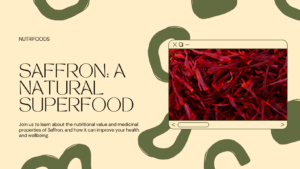
Saffron, known for its vibrant color and unique flavor, offers a wide range of health benefits. Rich in antioxidants, saffron has been used for centuries in traditional medicine for its medicinal properties. From improving mood to promoting overall well-being, saffron is a valuable ingredient with numerous nutritional and medicinal properties.
The Nutritional Properties of Saffron
Saffron contains various essential nutrients that contribute to its health benefits. These include:
- Vitamins: Saffron is a good source of vitamins A, C, and B6.
- Minerals: It contains minerals such as iron, potassium, and manganese.
- Carotenoids: Saffron contains carotenoids, including crocin and crocetin, which have antioxidant properties.
| Nutrient | Amount per 100g |
|---|---|
| Vitamin A | 530IU |
| Vitamin C | 2.6mg |
| Vitamin B6 | 0.1mg |
| Iron | 11.1mg |
| Potassium | 1724mg |
| Manganese | 28.4mg |
The Medicinal Properties of Saffron
Saffron possesses potent medicinal properties that have been recognized in traditional medicine. Some of the notable medicinal benefits of saffron include:
“Saffron’s antioxidant properties help protect the body from oxidative stress and can contribute to the prevention of chronic diseases.”
Furthermore, saffron has been found to have potential mood-enhancing effects, with studies suggesting its ability to alleviate symptoms of depression and anxiety.
These medicinal properties are attributed to the active compounds found in saffron, including crocin, safranal, and picrocrocin.
Whether used in culinary creations or as part of traditional remedies, saffron offers numerous health benefits. From its antioxidant properties to its potential mood-enhancing effects, saffron is a valuable spice that can enhance your overall well-being.
Traditional Uses of Saffron in Different Cultures
Saffron, renowned for its vibrant color and distinctive flavor, has been treasured throughout history for its various traditional uses in different cultures. From culinary delights to traditional remedies, saffron holds a special place in the hearts and kitchens of many nations.
What are some of the traditional uses of saffron?
In Persian cuisine, saffron is a quintessential ingredient, appearing in a wide range of savory and sweet dishes. It adds a rich and aromatic flavor to dishes such as rice pilaf, stews, and desserts like saffron ice cream.
In Indian cuisine, saffron is used in the famous dish “Biryani,” a fragrant rice dish containing meat, vegetables, and spices. Saffron lends its unique flavor and imparts a vibrant yellow hue to this traditional delicacy.
Throughout the Mediterranean region, saffron is a key component of various dishes. In Spanish cuisine, it is an essential ingredient in the famous paella, a rice dish filled with seafood, vegetables, and aromatic spices. In Italian cuisine, saffron is used in risotto and the classic Milanese dish “Risotto alla Milanese.”
“Saffron is like sunshine in food.”
In addition to its culinary uses, saffron has also been valued for its medicinal properties in different cultures. In traditional Chinese medicine, saffron has been used to promote digestion, improve blood circulation, and enhance mood. In Ayurvedic medicine, saffron has been used to alleviate inflammation, enhance memory, and promote overall well-being.
The versatility of saffron extends beyond the kitchen and medicine cabinets.
Saffron in Beauty and Rituals
In ancient times, saffron was highly esteemed for its cosmetic and therapeutic properties. It was used to create facial masks, perfumes, and even as a dye for fabrics. In Hindu rituals, saffron is used to mark the forehead as a sign of auspiciousness and purity.
Saffron in Tea and Beverages
In various cultures, saffron is steeped in hot water to create a fragrant tea that is believed to have soothing properties. The tea is often combined with other aromatic herbs and spices for a delightful and calming beverage.
The traditional uses of saffron highlight its cultural significance and the integral role it plays in different cuisines and traditional practices around the world.
With its vibrant color, unique flavor, and medicinal properties, saffron continues to captivate the senses and enrich culinary traditions globally.
Saffron Cultivation Techniques: Traditional vs. Modern Methods
When it comes to cultivating saffron, farmers have two primary approaches to choose from: traditional saffron cultivation techniques and modern methods. Both methods have their advantages and disadvantages, and understanding the differences between the two can help farmers make informed decisions about their saffron cultivation practices.
Traditional saffron cultivation techniques have been passed down through generations and are deeply rooted in history and cultural practices. These methods often involve manual labor and meticulous attention to detail. Farmers who choose traditional techniques rely on tried-and-true methods that have stood the test of time.
One of the key characteristics of traditional saffron cultivation is the reliance on human labor for various tasks, such as hand planting individual corms and hand-picking the delicate saffron threads during harvesting season. This labor-intensive approach requires a skilled workforce and can be time-consuming.
Traditional saffron cultivation techniques are deeply ingrained in the cultural heritage of saffron-growing regions. The process is often viewed as an art form, with each step carefully executed to produce the highest quality saffron.
On the other hand, modern saffron cultivation methods leverage technology and scientific advancements to streamline the cultivation process and improve efficiency. These methods often involve the use of machinery and automation to reduce labor requirements and increase productivity.
One significant advantage of modern saffron cultivation is the ability to scale production and meet the growing global demand for saffron. By harnessing technology, farmers can maximize their yield and reduce the impact of labor shortages.
“Modern saffron cultivation techniques have revolutionized the industry, allowing farmers to achieve higher yields and maintain consistent quality,” says Dr. Maria Johnson, an agricultural expert specializing in saffron cultivation.
While modern methods offer increased efficiency, some argue that they lack the traditional charm and artisanal touch of traditional cultivation. Additionally, the upfront costs associated with adopting modern techniques, such as purchasing machinery and implementing advanced irrigation systems, can be a barrier for small-scale farmers.
Comparison of Traditional and Modern Saffron Cultivation Techniques
| Traditional Cultivation Techniques | Modern Cultivation Techniques |
|---|---|
| Reliance on manual labor | Utilization of technology and automation |
| Slow and labor-intensive | Streamlined and efficient |
| Deep-rooted cultural practices | Increased scalability and production |
| Requires skilled workforce | Reduces labor requirements |
| Artisanal touch | Standardized and consistent output |
Ultimately, the choice between traditional saffron cultivation techniques and modern methods depends on the specific goals and resources of the farmer. Some may prefer to preserve cultural traditions and artisanal practices, while others may opt for increased efficiency and scalability.
Regardless of the chosen approach, successful saffron cultivation requires careful planning, attention to detail, and a deep understanding of the crop’s specific requirements. Whether farmers embrace traditional methods or embrace modern advancements, the goal remains the same: to produce the highest quality saffron that delights consumers around the world.
Maximizing Saffron Yield and Quality: Tips and Strategies
If you’re looking to cultivate saffron and achieve the highest possible yield and quality, there are several tips and strategies that can help you on your journey. From planting to harvesting, every step of the process plays a crucial role in maximizing your saffron production.
1. Choose the Right Bulbs
Start by selecting high-quality saffron bulbs from reputable suppliers. Look for bulbs that are plump, firm, and free from any signs of decay or disease. Healthy bulbs have a higher chance of producing productive and robust saffron plants.
2. Provide Optimal Growing Conditions
Saffron thrives in well-drained soil with a pH range of 6 to 8. Ensure that your saffron beds have proper drainage to prevent waterlogging, as excess moisture can lead to bulb rot. Provide sufficient sunlight by planting saffron in areas with good exposure to sunlight. Additionally, maintaining the right temperature and humidity levels is crucial for maximizing saffron yield and quality.
3. Implement Irrigation Techniques
Proper irrigation is essential for achieving optimal saffron production. Overwatering can lead to bulb rot, while underwatering can result in stunted growth. Implement a careful irrigation system that provides the right amount of moisture to the saffron plants. This may include drip irrigation or watering based on soil moisture levels.
4. Practice Adequate Plant Spacing
Ensure that you provide enough space between the saffron bulbs for proper growth and airflow. The recommended spacing is 10 to 15 centimeters between bulbs. Adequate plant spacing promotes healthier plants and reduces the risk of diseases.
5. Control Weeds
Weeds compete with saffron plants for nutrients, water, and sunlight, potentially reducing saffron yield. Implement regular weeding practices to keep the saffron beds weed-free. Hand weeding or using organic weed control methods is advisable to avoid chemicals that could impact saffron quality.
6. Monitor and Manage Pests and Diseases
Regularly inspect your saffron plants for any signs of pests or diseases. Implement organic pest control methods and apply appropriate treatments to minimize damage. By keeping your saffron plants healthy and free from pests and diseases, you can optimize yield and maintain high-quality saffron production.
7. Harvest at the Right Time
Timing is crucial when it comes to harvesting saffron. Harvest the delicate saffron threads shortly after the flowers bloom, typically in the morning when the flowers have fully opened. Delaying the harvest can lead to reduced quality and lower yield as the threads lose their vibrant color and flavor.
8. Properly Store and Handle Saffron
Storing saffron correctly is essential for preserving its quality and flavor. Place the saffron threads in airtight containers and store them in a cool, dark place away from direct sunlight and moisture. Proper handling and storage techniques ensure that your saffron retains its potency and freshness.
By implementing these tips and strategies, you can increase your saffron yield and produce saffron of the highest quality.
| Tips for Maximizing Saffron Yield and Quality |
|---|
| Choose high-quality saffron bulbs |
| Provide optimal growing conditions: well-drained soil, proper sunlight, and temperature |
| Implement appropriate irrigation techniques |
| Practice adequate plant spacing |
| Control weeds |
| Monitor and manage pests and diseases |
| Harvest saffron at the right time |
| Properly store and handle saffron |
The Saffron Market and its Economic Impact
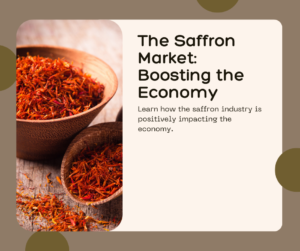
Saffron cultivation not only holds cultural and culinary significance but also plays a vital role in the global market. The economic impact of saffron cultivation is far-reaching, with its production and trade contributing to the livelihoods of many individuals and the overall development of specific regions.
Global saffron production is concentrated in countries such as Iran, Spain, and India. These regions have the ideal climatic conditions and historical expertise required for cultivating high-quality saffron. The abundance of saffron cultivated in these countries ensures a steady supply in the international market.
The saffron market is characterized by its high value and demand. This coveted spice is prized for its unique flavor and vibrant color, making it a sought-after ingredient in various cuisines around the world. As a result, saffron commands a premium price, driving economic growth in regions where it is cultivated.
Furthermore, the economic impact of saffron cultivation extends beyond the direct sale of the spice. The cultivation process requires substantial labor, providing employment opportunities for individuals in saffron-growing regions. This stimulates local economies and contributes to poverty reduction.
Moreover, saffron farming encourages tourism in areas known for its cultivation. Visitors are drawn to the picturesque saffron fields, creating additional revenue streams for local businesses, such as accommodations, restaurants, and souvenir shops.
Table: Global Saffron Production by Country
| Country | Production (Metric Tons) |
|---|---|
| Iran | Approximately 400 |
| Spain | Approximately 30-35 |
| India | Approximately 6-8 |
Additionally, saffron trade creates opportunities for export and import businesses, fostering international trade relationships. Countries that import saffron benefit from its unique properties and utilize it in their local industries, including food, cosmetics, and pharmaceuticals.
The saffron market’s economic impact is not solely limited to saffron-growing countries. Importing nations also experience economic benefits from the spice, as it contributes to the diversification of their import portfolios and stimulates domestic consumption.
The Future of the Saffron Market
The global demand for saffron continues to grow, driven by the spice’s unparalleled flavor and its recognition as a natural source of various health benefits. As a result, saffron cultivation is anticipated to expand, leading to increased economic opportunities for farmers in existing saffron-growing regions and potentially creating new saffron-growing areas.
FAQ
Q. What is saffron cultivation?
A. Saffron cultivation refers to the process of growing and harvesting saffron, a spice derived from the flower of Crocus sativus. It involves specific techniques and optimal growing conditions to ensure the production of high-quality saffron threads.
Q. Why is saffron significant in the culinary and medicinal fields?
A. Saffron is highly valued for its unique flavor and aroma, making it a prized ingredient in various dishes and cuisines around the world. It also possesses medicinal properties, including antioxidant and potential mood-enhancing effects, making it a valuable addition to many traditional remedies and modern herbal medicine.
Q. What are the ideal growing conditions for saffron?
A. Saffron thrives in regions with a Mediterranean climate, characterized by hot, dry summers and mild, wet winters. It requires well-draining soil and full sun exposure. The ideal temperature range for saffron cultivation is between 15 to 25 degrees Celsius (59 to 77 degrees Fahrenheit).
Q. What are the best practices for planting and harvesting saffron?
A. When planting saffron, it is important to ensure a planting depth of around 10 to 15 centimeters (4 to 6 inches) and a bulb spacing of 10 to 15 centimeters (4 to 6 inches) apart. Harvesting saffron involves carefully plucking the vibrant red stigmas from the flowers and drying them to preserve their flavor and aroma.
Q. What are the health benefits of saffron?
A. Saffron is rich in antioxidants, which help protect cells from oxidative stress and damage. It has also been studied for its potential mood-enhancing effects and is believed to have positive effects on overall well-being. Additionally, saffron contains various essential nutrients, making it a valuable addition to a balanced diet.
Q. How is saffron traditionally used in different cultures?
A. Saffron has a long history of culinary and medicinal use in various cultures. It is a key ingredient in dishes like paella, biryani, and bouillabaisse. In traditional medicine, saffron has been used to treat a range of ailments, including digestive disorders, menstrual symptoms, and depression.
Q. What are the differences between traditional and modern saffron cultivation techniques?
A. Traditional saffron cultivation methods often involve manual labor and follow age-old practices. Modern techniques, on the other hand, may incorporate innovative technology and more efficient processes to increase productivity. Both methods have their advantages and disadvantages, and the choice depends on the specific requirements and resources of the cultivator.
Q. How can I maximize saffron yield and quality?
A. To maximize saffron yield and quality, it is important to ensure proper soil preparation, use high-quality bulbs, and follow recommended planting and harvesting practices. Adequate water management, pest control, and timely fertilization also play a crucial role in achieving optimum saffron production.
Q. What is the economic impact of saffron cultivation?
A. Saffron cultivation has significant economic importance, both at the global level and within specific regions. It contributes to job creation, export earnings, and supports the livelihoods of many farmers and communities. Saffron trade also plays a role in international commerce and provides opportunities for economic growth in saffron-producing regions.
Q. Are there any other frequently asked questions about saffron cultivation?
A. If you have any other questions about saffron cultivation that are not answered here, please feel free to reach out to us. We are here to help!
Conclusion
After exploring the secrets of saffron cultivation, it is clear that this vibrant spice holds immense potential in both culinary and medicinal fields. Saffron’s unique flavor and health properties make it a prized ingredient in various cuisines around the world. Moreover, its antioxidant properties and potential mood-enhancing effects contribute to its reputation as a valuable medicinal herb.
To successfully cultivate saffron, it’s crucial to understand the ideal growing conditions. Saffron thrives in regions with a Mediterranean climate, where it requires dry summers, mild winters, and well-drained, loamy soil. By following best practices in planting and harvesting, including proper bulb spacing and timely harvesting, growers can ensure a successful saffron yield.
The value of saffron cultivation extends beyond the health benefits and culinary uses. Saffron has a rich cultural heritage and is deeply ingrained in many traditional remedies and recipes across different cultures. The cultivation techniques have evolved over time, with a distinct difference between traditional and modern methods. Growers can opt for the approach that best suits their resources and goals.
In conclusion, saffron cultivation is a fascinating endeavor that combines science, tradition, and skill. By maximizing saffron yield and quality through effective strategies and techniques, growers can not only contribute to the saffron market but also benefit from its economic impact. With its global popularity and valuable properties, saffron cultivation continues to hold promise for both growers and consumers.


